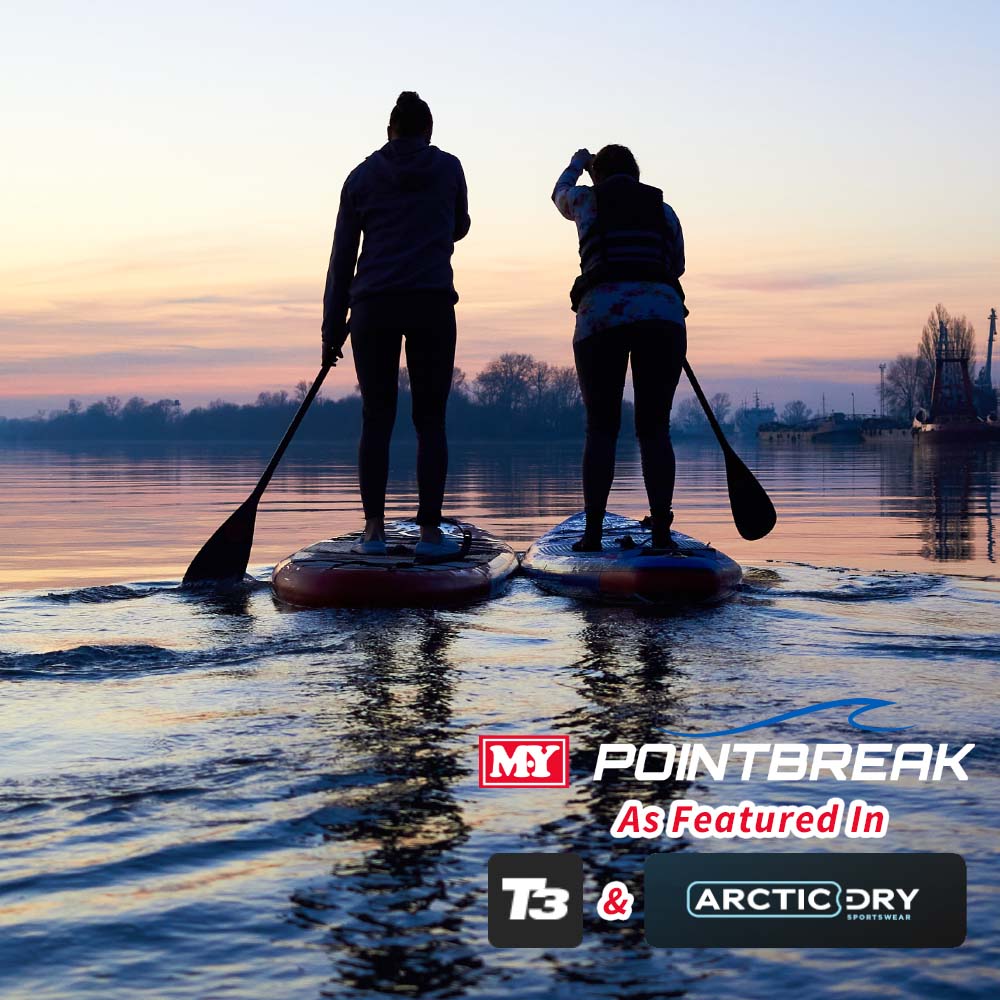
A SUP Is for Life, Not Just for Summer: Our Top Tips for Taking the SUP Out Over the Winter
If runners can keep it up in the icy months - why can't we?
Although paddle boarding is synonymous with warmer climes for a lot of us, there are still plenty in the ever-growing SUP community keen to get out on those wintery waters.
In fact, the UK is a fantastic place for a winter paddle with miles of rivers and canals to explore as well as an extensive coastline - a good thing too! If we had to wait for the sunshine a fair chunk of us might never get on the water, especially up North!
For many, the winter waterways are even preferable to the summer as there are less people to navigate around - with more space to yourself it can actually feel even more peaceful.
Stand up paddleboarding can be a great cold weather sport as long as you engage your common sense with the added risks of colder weather conditions.
Before you go rushing out on the water, you need to make sure you're well prepared.
Here's some of the best Winter Paddle Boarding advice we've found:
Afraid of falling in?
You should be. Not to scare you off, but it's the truth. The colder water is one of the biggest threats, so consider your ability carefully and realistically, honestly think about your skill level.
If you ended up in the water more often than not during the summer then winter paddle boarding might not be for you just yet. If you're confident you can comfortably stay on your board for the duration, you're ready to start prepping for your winter SUP adventure.
Adjust your SUP wardrobe for the cooler climate.
Layers are your friend! The wetsuit will help keep you warm should you fall in, but you might need a few extra layers to help stave off the cold.
Some clothing essentials for your checklist include:
- A winter wetsuit
- Thermal under layers
- Warm hat or wetsuit hood, or both!
- Wetsuit gloves
- Wetsuit boots
- Additional layers to wear over the wetsuit - make sure it's something you can easily take off just in case you do fall in!
- Clothes for after, you'll want to switch out anything wet for something nice and dry pretty sharpish!
- Personal Floatation Device. Just wear one. You should be wearing one anyways.
Bring a dry bag.
Pack some snacks, a warm drink, and your phone as a bare minimum; some spare layers wouldn't be a bad idea, either!
Leave a float plan.
It's good practice to let people know where you're going anyway. But it's even more important in the winter. Let people know where you're going, what route you plan to take, and when they should expect you back. Make sure they're aware of any changes to your plans too!
If in doubt, don't go out!
It's vital to keep a close eye on the weather and know when to stay home. If you're looking at strong winds, choppy waves, or any kind of weather that makes you feel unsure, it's best to save it for another day.
Bring a buddy.
If you can, it's a good idea to bring a pal with you. If anything happens, a friend to help could make all the difference!
Don't go out in the dark.
It seems obvious, but we all know how quickly it gets dark (and cold!) in the winter. So make sure you've got plenty of time to get back to the shore before the temperature plummets and all the light disappears!
Stay in sight of the shore.
Winter is not the time to wander off.
Alway remain in full view of the shoreline, and use key landmarks to help keep you on your planned route. If you can't swim to the shore or riverbank, you're too far out!
Last but not least: Always double check your gear
It's always important to check your board, and make sure you have all the kit you need before you hit the water, but it's even more important here. Make sure your board is in tiptop condition, and that you're not forgetting something important! Double check that list, then check it again.
For the full low-down on paddle boarding safety, check out the RNLI or the RLSS

